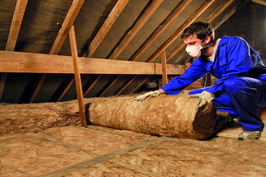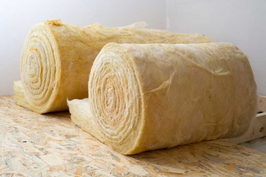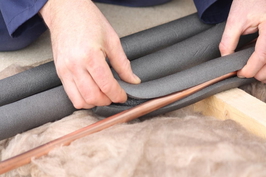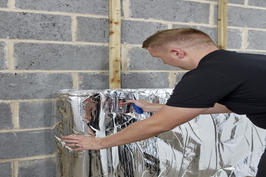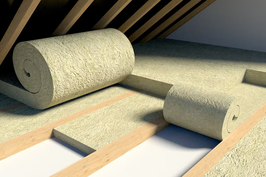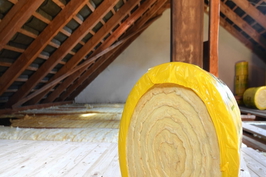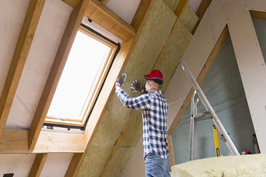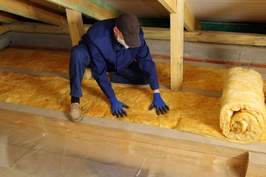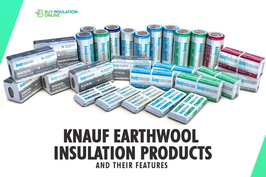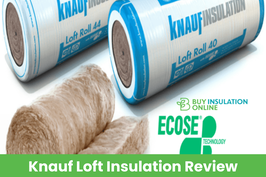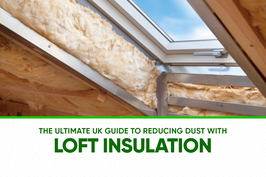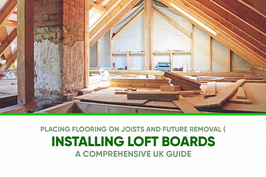Similar Categories
Buy Cheap Loft Insulation Online
Buying cheap loft insulation online is one of the best ways to save money on your energy bills. Not only does it provide an extra layer of protection against cold air, but it also helps to keep your home warm and comfortable all year round.
When energy prices are going through the roof, you've got to take action and stop heat from going through the roof too!
The right type of insulation can help to reduce your heating bills by up to 25%, meaning that you can save a significant amount of money over time.
When buying insulation online, make sure that you check the product specifications carefully and read reviews from customers in order to ensure that you are getting the highest quality insulation for the lowest possible price.
Additionally, look out for special offers or discounts that may be available, as these can help you make even bigger savings on your purchase.
Buy Insulation Online is your one-stop shop for cheap loft insulation.
What is loft Insulation?
Loft Insulation is a material barrier placed between ceiling joists or roof rafters to prevent heat loss through the roof.
This barrier can be in the form of rolls made of fibreglass or mineral wool batts or foil insulation even.
Why insulate a loft?![loft insulation]()
Loft insulation works by limiting heat loss through roofs. Any kind of Insulation in loft, minimises heat loss thereby reducing your energy bills significantly.
It also makes your home more comfortable. By installing adequate loft insulation you easily meet the building regulations.
How thick should loft insulation be?
The recommended depth for loft insulation is approx. 270mm thick (for fibreglass loft insulation) and approx. 250mm thick (for mineral wool insulation). In new builds, the depth of insulation is found to be as much as 300mm these days.
Benefits of Loft Insulation
1. It helps keep your indoors warm and snug: Loft insulation prevents heat from escaping through the attic or loft. Insulation can reduce heat loss, therefore it becomes easier to maintain comfortable indoors when the heat is not allowed to escape as easily through the roof.
2. Less heat loss equals lower bills: Attic Insulation could save up to £110 each year, which reflects in your utility bills.
3. Return On Investment: Loft Insulation cost vs benefit analysis shows that taking the time to put insulation in your loft will save you potentially £10,000's over the lifetime of the insulation, which has a 40-year lifespan on average. It means you will easily retrieve the cost of insulating your loft many times over in the long term. Moreover, the total cost of insulating a loft is generally lower as compared to a wall or floor insulation especially if you are using blanket insulation or attic insulation rolls to do so.
4. Environment-Friendly: Insulation can make your home eco-friendly. Reduced carbon emissions are another benefit of effective loft insulation. Since the heat is maintained indoors, your heating and cooling systems will not need to work as hard, thus emitting fewer toxic gases and chemicals. Reduced energy expenditures also mean reduced dependency on limited resources. Some loft insulating materials are made from recycled resources (recycled plastic bottles, for example).
5. Increased home value: Loft insulation is an easy way to get a better Energy Performance Certificate rating for your property. It helps improve your home value.
What type of Loft Insulation do you need?
Which is the best loft insulation material? What are the different loft insulation types? Which loft insulation is best? These are some common questions we get from our customers. Before choosing loft insulation for your home, you must be aware of the different types of insulating options. When it comes to insulating lofts, there are a few different types of materials that you can choose from. Primarily, the cost of insulating the loft will depend on your budget and also on factors like your area, the age of your building etc. All of these factors will be discussed in detail below.
Mineral wool and fibreglass are what we consider standard loft insulation. They are generally used to insulate lofts. These cheap insulation rolls retain heat well and are ideal for keeping your home warm and comfortable during the winter months.
For those who prefer a more environmental-friendly option, sheep's wool is also available as an insulating material. Sheepwool is naturally breathable and repels moisture, making it perfect for regulating temperatures in your home all year round. You can also consider wood fibre insulation like Steico Flex or Hemp wool insulation as other natural loft insulating options.
Finally, if you’re looking for an economical option, then recycled paper-based insulation could be the way to go. This type of insulation is not only cheaper than other options but also performs surprisingly well in terms of energy efficiency and soundproofing.
Whatever type of loft insulation you choose, make sure that it meets all building regulations and is installed correctly for optimal results.
Where should you put insulation in your loft?![rafter insulation]()
The answer to this question would depend on how you would like to use your loft space. Cold loft space is perfect if you want to use your loft area for storage purposes. In this case, insulation rolls are installed between and over the ceiling joists, on the loft floor. Insulating your loft is easy with loft rolls and ideal for those willing to take up DIY loft insulation.
If you wish to use the extra space in the loft (why waste it?) and convert it into an office or just an extra space to relax in, then you should plan your insulation to create a warm loft space. When you put multifoil insulation panels, insulation boards, batt or blanket loft insulation between rafters, over or under them, you create a warm roof. This should be done in consultation with building control and your builder, but it's relatively easy to do. You can check out the installation videos on our website for guidance.
A Guide to Choosing the Right Loft Insulation Thickness
Loft insulation is one of the most effective ways to insulate your home and reduce your energy bills. But how thick should loft insulation be? As mentioned above, there are several factors to consider when deciding on the thickness of your loft roll insulation, including the type of property you live in, the type of insulation material you choose and the climate you live in.
All of these factors can impact the type of product you need and therefore how cheap loft insulation can be. This is because loft insulating materials like fibreglass, mineral wool, foil rolls etc vary in density and make-up which can affect the cost of the loft rolls.
Generally, the recommended thickness of loft wool insulation is between 250mm and 270mm. But it’s always best to check with your local authority or the insulation manufacturer to make sure you’re using the right thickness for your home.
Here’s a comprehensive guide to help you choose the right loft insulation thickness for your home.
Factors to Consider When Deciding on the Thickness of Your Loft Insulation
1. The Type of Property You Live In
The type of property you live in will have an impact on the thickness of insulation you require. If you live in a detached or semi-detached house, you’ll need a thicker layer of attic insulation than if you live in a terraced house. This is because heat escapes more easily through the roofs of a detached or semi-detached house.
2. The Type of Insulation You’re Using
There are two main types of insulation: Rolls of insulation commonly called blanket insulation & Batts of insulation.
Loft insulation in a roll is usually made from either mineral wool or glass fibre and is available in a range of thicknesses. The most common thicknesses are 100, 150mm, 170mm, and 200mm.
Batt insulation is also usually made from stone wool and is available in thicknesses between 100mm and 400mm. They are more rigid and dense than blanket loft insulation, which usually means they offer better acoustic insulation.
3. The Climate You Live In
The climate you live in will also determine how thick should loft insulation be. For example, If you live in a cold climate, you’ll need a thicker layer of insulation than if you live in a warm climate. This is because heat escapes more easily in cold climates.
4. The Age of Your Home
The age of your home will also determine what thickness of loft insulation you'll need. If you live in an older property, you’ll need a thicker layer of insulation than if you live in a newer property. This is because heat escapes more easily through the walls of an older property.
5. The Type of Heating You Have
The type of heating you have will also have an impact on the thickness of attic insulation you need. If you have a gas-fired boiler, you’ll need a thicker insulation layer than if you have an electric boiler. This is because electric boilers are more energy-efficient than gas-fired boilers.
What U-value is Needed for Loft and Roof Insulation?
The U-value is the measure of heat loss through a material or construction. The lower the U-value, the better the insulation will be. You’ll need a U-value of 0.18 or less for your loft insulation. This will ensure you don’t lose any heat through your roof.
Buy Insulation Online Loft Rolls Selection
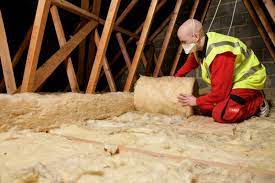
A. Superglass Loft Roll:
This lightweight, fibreglass loft insulation by Superglass provides excellent thermal and acoustic insulation. It's the cheapest loft insulation we have on our site, but don't let that think that its price is a reflection of its quality. Superglass make quality blanket insulation which is fit for purpose yet very economical. This perforated, flexible loft insulation on a roll makes installation between the joist spacings easy with minimal on-site trimming and wastage.
B. Knauf loft Insulation Roll:
This pre-cut, perforated fibreglass loft insulation by insulation giant Knauf, was explicitly developed for use in cold lofts for pitched roof insulation at ceiling level. Its acoustic, fire, and thermal qualities are all remarkable. Knauf's ECOSE technology makes these loft roll soft to the touch and environmentally friendly.
C. Rockwool Loft Insulation:
Rockwool's line of loft insulation consists of Twin roll, Rollbatts and general Loft Insulation Rolls. They all offer excellent thermal and acoustic insulation with added fire resistance. This range is suitable for use in all types of buildings and as an overlay for ceiling tiles in suspended ceilings.
Rockwool loft insulation range is slightly dearer compared to the loft insulation fibreglass offered by Knauf and Superglass since they are made of mineral wool and hence offer slightly better thermal and fire protection.
No matter what type of loft you choose, you can take your pick from the wide range of attic insulation materials we offer. You do not need to ask Google for - loft insulation near me - because no matter where you are based in the UK, with Buy Insulation Online's nationwide delivery service we deliver to your doorstep or office site, fairly quickly. Getting loft insulation has never been easier. We are just a click away and are forever ready to go that extra mile for you. Buy Insulation online is the cheapest place for loft roof insulation.
What Properly Installed Loft Insulation Could Give You
If properly done, loft insulation also comes with the following benefits to dwellings.....
- Reduced time to heat the house up when it's cold, for example in a morning
- Reducing Energy Bills
- House stays warmer for longer once the heating is turned off
- Helps Keeps Heat out of the house in the summer
- Acts as Acoustic Insulation, Reducing Noise pollution such as airplanes flying overhead
- Prevents warm moist air condensing on rafters, causing mould and damage to timbers
Insulating your loft has numerous advantages, regardless of whether you do it yourself or hire a local contractor. Read on to discover more about loft insulation, how it works, and what proper installation could give you, your family, and your home.
Cost of Loft Insulation
How much is loft insulation? What is the cost for loft insulation? What or How much does loft insulation cost? Our answer to these questions is that the cost of insulating lofts varies basically depending on your choice of insulating materials. Loft insulation cost per square meter is cheaper if you use fibreglass insulation. If you choose the Rockwool insulation range, it might be a bit dearer.
Using insulation boards or foil insulation for warm loft insulation is likely to be the costlier but they come with their own set of benefits like increased thermal performance at reduced thickness, saving space etc. In fact, foil insulation is noted to give you cooler summers as compared to wool loft insulation.
The UK government offers loft insulation grants wherein citizens that fit into a certain criterion can apply for free loft insulation in their homes.
The Process of a Loft Insulation Installation![installing loft insulation]()
Installing roof insulation rolls is an easy and cost-effective way to improve the thermal efficiency of your home and reduce your energy bills. If you’re looking for a DIY task to help save money on your energy bills whilst also saving on labour costs, installing loft insulation is a great place to start, or you can always look for local loft insulation installers to do the task for you.
Below are some loft insulation dos and don't along with the steps for insulating your loft yourself:
1. Measure the loft space for insulation
Before you begin, to insulate a loft, the first step is to measure the area of your loft to determine the amount of insulation you need to purchase. Carefully measure the length and width of your loft area and then multiply the two numbers together to give you the total area. Make sure to double-check your calculations to ensure you purchase the correct amount of insulation for the job.
Before you buy insulation for loft, check to see if there is insulation available and its condition. If you already have insulation up in your attic, then you could just add a new layer on top of the insulation, depending on the condition of the existing insulation. However, take care that you meet the required building regulations. While insulation is usually meant to reduce heat loss adding too much of it will not help either.
What thickness loft insulation to buy will also depend on whether you have pre-existing insulation and its condition. If you are insulating a new home then it would depend on the depth of the joists. Whatever may be the case, you will need to maintain 270mm of loft insulation if you are using rolls of fibreglass insulation and always ensure that your work meets the current Building regulations.
2. Choose the correct insulation product
Choosing the right form of loft insulation is essential in order to ensure that the installation is effective and energy efficient. Depending on the type of property you are insulating, different loft insulation ranges may be suitable. For example, mineral wool insulation is suitable for both cavity walls and solid walls, while foam insulation is better suited for cavity walls. Before you even buy insulation, it is important to consider the U-value of the product, as well as its R-value, which will determine how effective the insulation will be.
3. Prepare the surface for insulation
The third step in installing loft insulation is to prepare the surface. Before you start, you’ll need to make sure the loft is free from debris and dust, as this may affect the insulation’s ability to work effectively. Remove any furniture or boxes, or anything else that may be in the way. Sweep the floor of the loft with a brush or vacuum cleaner to get rid of any dirt, dust and cobwebs.
Check that all the joists are in good condition and repair any that are damaged before you start. Make sure the surface of the loft is as even as possible so that the insulation can be fitted correctly.
4. Install the insulation correctly
Once the joists have been identified, it is time to start installing the insulation. Start by laying the insulation between the joists, making sure that the ends are flush with the ends of the joists. Cut the insulation to size, where necessary, making sure that the edges line up correctly. When you have finished laying the insulation, use a staple gun or nails to secure it to the joists.
Make sure to leave a small gap between the insulation and the walls for air circulation. This will ensure that the insulation does not block any air vents or air flow. Once this is done, laying insulation boards across the joists could improve energy savings.
5. Ensure the insulation meets safety regulations
After choosing the insulation that best suits your needs, you must make sure it meets safety regulations. The insulation should be fire retardant and meet the required standards for thermal performance. Check the product’s safety information and read the manufacturer’s installation instructions carefully. Be sure to wear gloves, a mask, and protective eyewear when installing the insulation, as some products are irritants especially if you are putting fibreglass loft insulation.
If you are unsure about any aspect of the installation, consult a professional.
In conclusion, installing loft insulation can be a simple and affordable way to keep your home warm while also reducing your energy bills. It's important to make sure you buy the right type and amount of insulation for your home, and that you install it correctly to get the most benefit from it. Taking care of these steps will ensure that your home is well-insulated and that you can enjoy a comfortable, energy-efficient home for years to come.
Any home can profit from the installation of a functional and properly insulated loft. Loft insulation is the woollen cap that your house wears to remain warm. conserving energy by maintaining a steady temperature
Loft insulation comes in a range of shapes and sizes. Mineral wool is a prominent type of insulation that is used in accessible lofts. The blanket rolls act as a thermal barrier.
After installation, squeezing the loft insulation in any manner reduces the insulation's thermal effectiveness by roughly half. A raised boarded space is required on top of the installation for the storage of equipment or supplies in a loft. Products that make life easier while simultaneously providing the best insulation possible.
Another important aspect of this little insulation project is that before you even begin insulating your loft, ensure that all the pipes, boilers and tanks in the loft area are insulated as well. Pipe insulation will help to keep water leakage and condensation away thereby ensuring that your loft insulation remains for a longer time and functions to its optimum capacity.
If there are pipe leaks, breaks etc, the water from these will damage the existing loft insulation, creating a whole lot of other problems like moulds or structural damage. Furthermore, whilst it is okay to place electric wires within the insulation, ensure they are safe to use and properly protected.
![insulate loft]() Properly Installed Loft Insulation Conserves Heat and Temperature
Properly Installed Loft Insulation Conserves Heat and Temperature
Heat is lost at a 25% rate via uninsulated roofs. Insulating your attic creates a thermal barrier that prevents heat from rising and escaping through your roof. This lowers the quantity of heat wasted in your home.
Loft insulation minimises heat loss by one-quarter. As a result of this modification, your home will be cosier in the winter and more pleasant in the summer.
Properly Installed Loft Insulation Saves Money
You might save £110 each year if you insulate your loft. This has an impact on energy prices. Loft insulation price is returned and then some over a forty-year period.
Keep in mind that a government or energy company rebate could considerably reduce or perhaps completely cover the cost of installing loft insulation.
Properly Installed Loft Insulation Is the “Greener” Way
Lowering carbon dioxide emissions results from using less energy. After loft insulation, your home will have a significantly lower carbon footprint, making it more environmentally friendly. According to Energy Saving Trust calculations, annual CO2 savings can range from 550 kg to 1030 kg depending on the size and architecture of the property.
Properly Installed Loft Insulation Reduces Noise
Insulating a building helps to reduce the quantity of noise pollution. When you insulate a loft with wool insulation that bounces off or absorbs sound you create an effective barrier thereby reducing the noise from outside, especially on the top floor.
Properly Installed Loft Insulation Increases Home Value
The property's Energy Performance Certificate can be enhanced by adding attic insulation. When the standard and grade of insulation in the loft is raised, the value and marketability of your home increase.
Conclusion
Now, you are better equipped to install loft insulation after learning about the benefits it has on both the economy and the environment. When properly done, you will realise what a great investment insulation could be for your home and your family in the long run.
Whether you're looking for ways to increase the energy efficiency of your home or you are insulating a new home, our customer service representatives have the know-how to help. We are just a call away, should you need any assistance when shopping with us. On the left of this page, you will also find loft insulation faqs for quickly solving any queries you may have.
We'd be happy to answer any questions you may have like - 'how much does loft insulation cost' or 'how to stop a warm loft from heating your room temperatures during summer, we can give you solid trusted advice when it comes to this subject.
If you are looking for the best price for insulation materials, Buy Insulation Online is here to offer you quality at fair prices. We may not be as cheap as Wickes or b&Q, but we will go a step beyond to give you the best service we can. Shop our insulation items today!




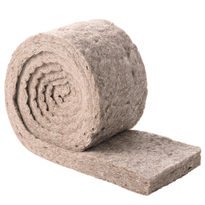
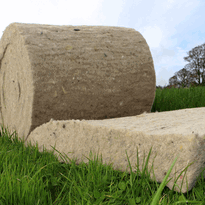


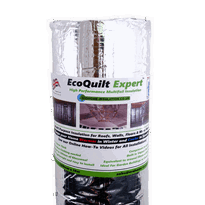
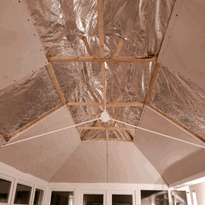

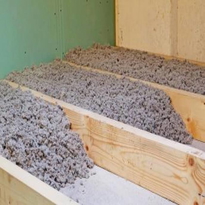

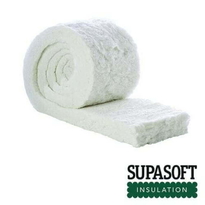
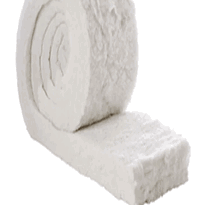
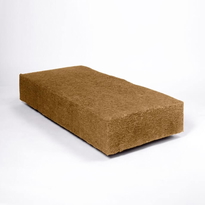
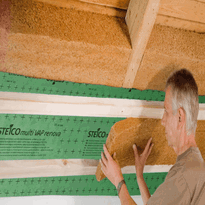
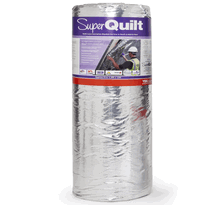
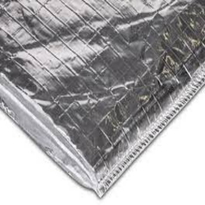
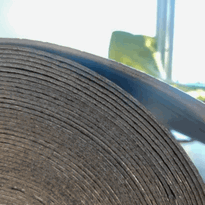
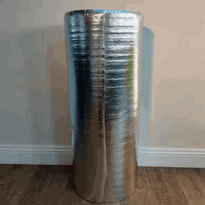
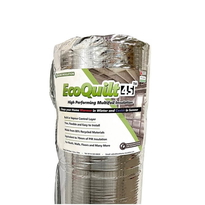
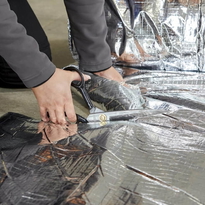
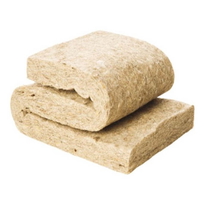
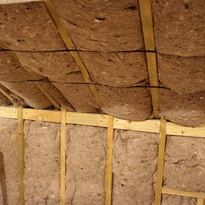

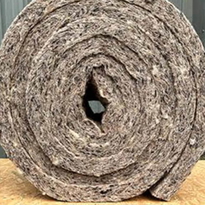
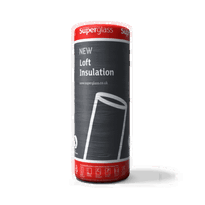




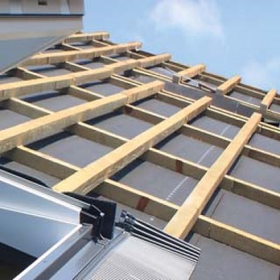

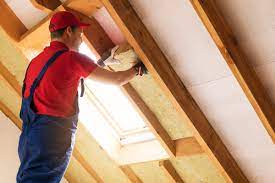
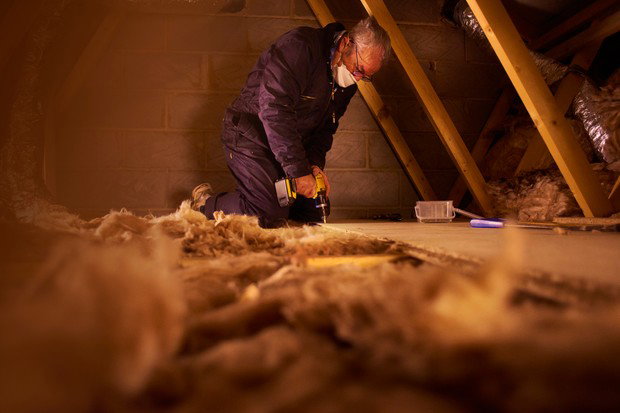
 Properly Installed Loft Insulation Conserves Heat and Temperature
Properly Installed Loft Insulation Conserves Heat and Temperature